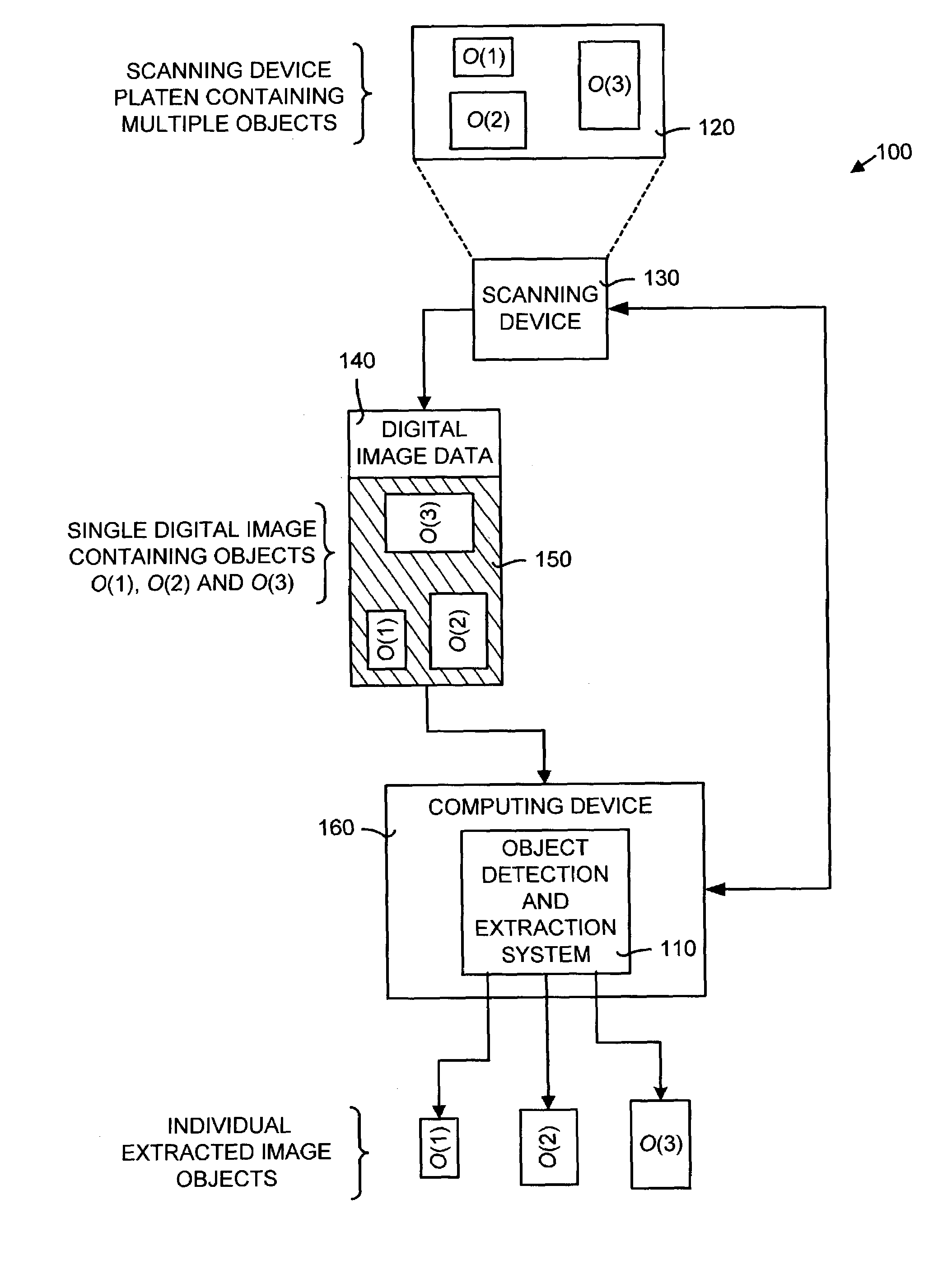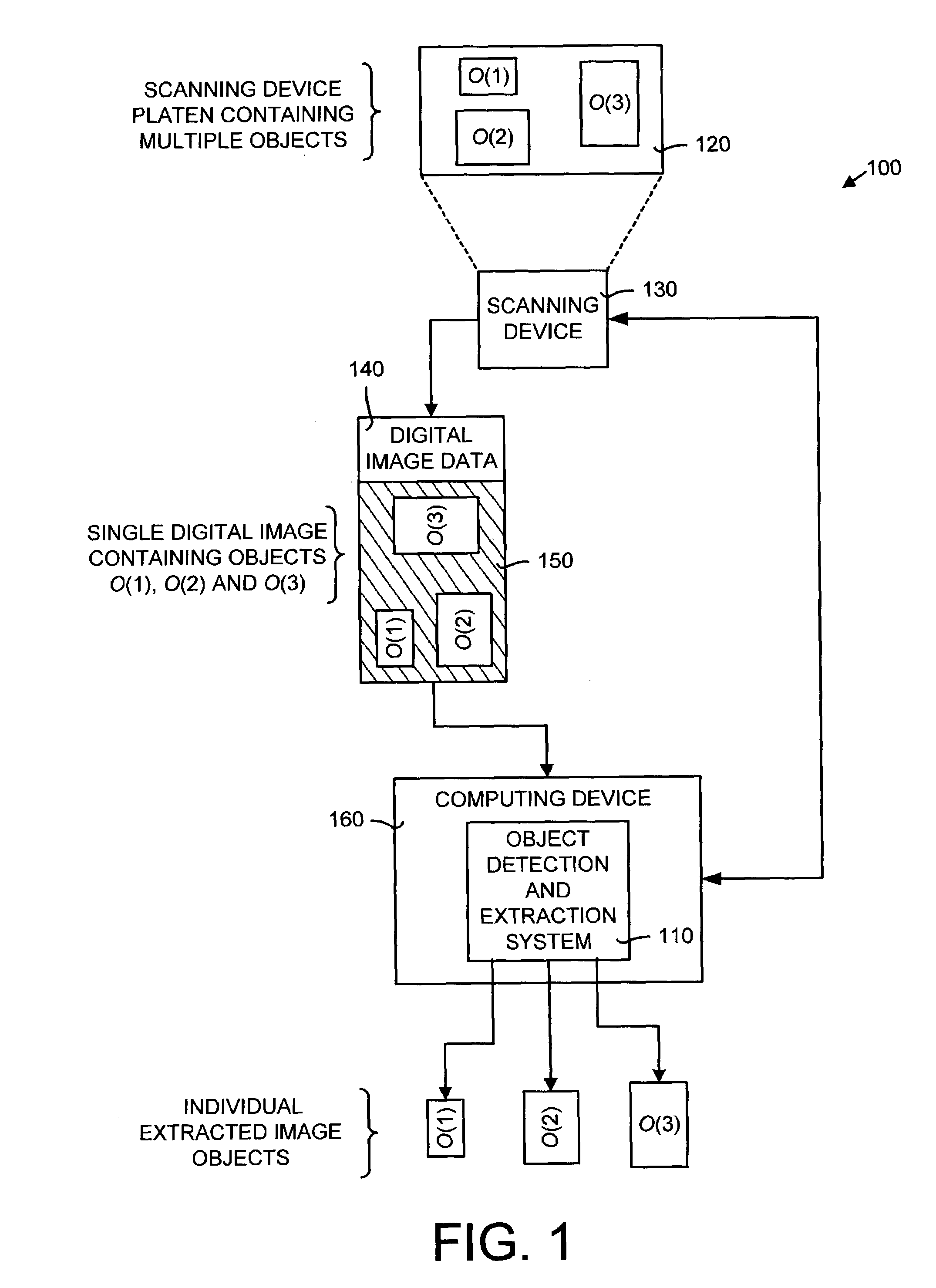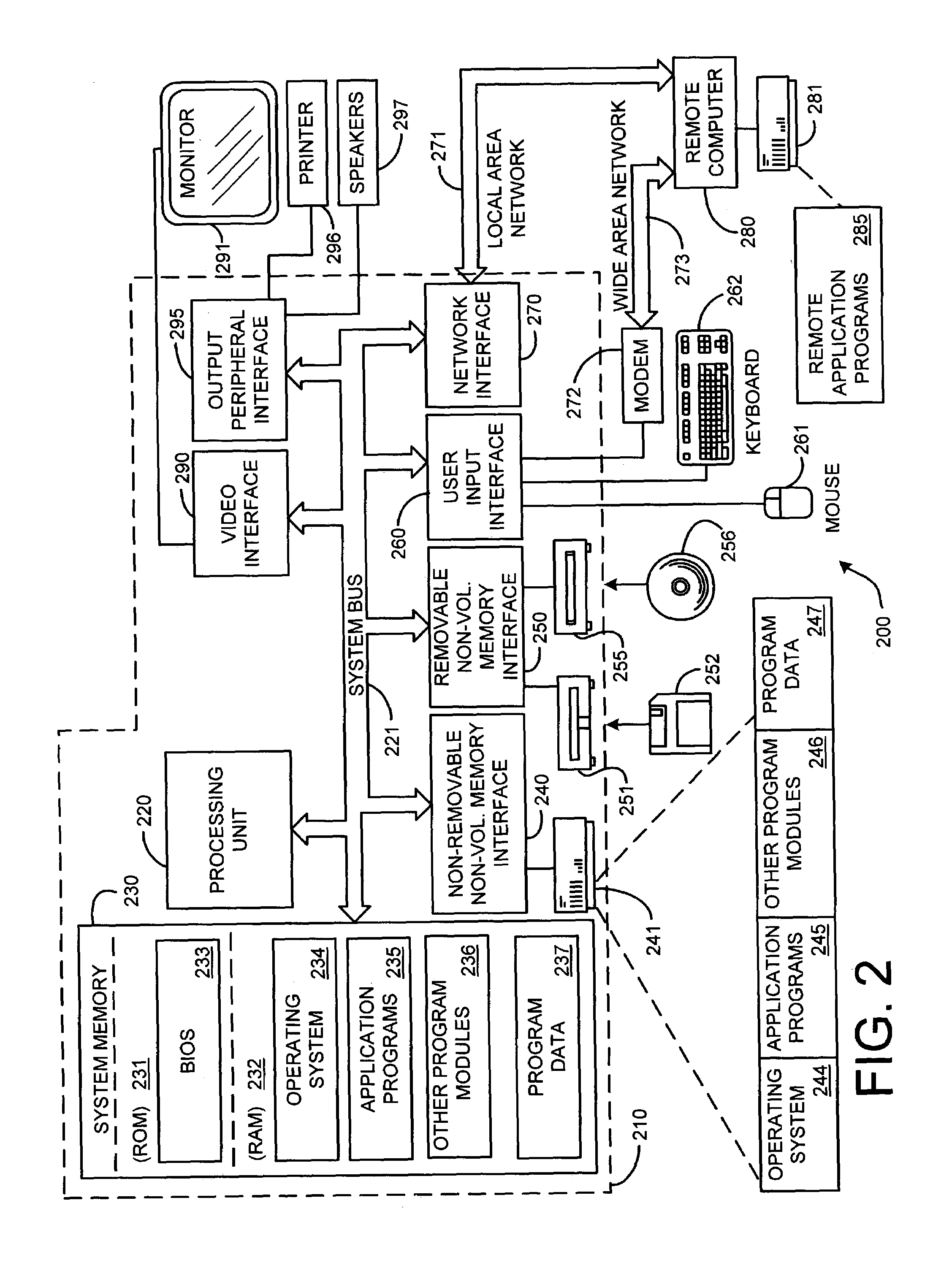System and method for automatically detecting and extracting objects in digital image data
a technology of digital image data and automatic detection, applied in the field of image processing, can solve problems such as orientation and position of objects
- Summary
- Abstract
- Description
- Claims
- Application Information
AI Technical Summary
Benefits of technology
Problems solved by technology
Method used
Image
Examples
working examples
V. Operational Details and Working Examples
[0062]The object detection and extraction method can be used to process an image that contains a single object as well as multiple objects. FIG. 7 is a flow diagram illustrating the details of the object detection and extraction method shown in FIGS. 5 and 6. Referring to FIG. 7, an image is received as input (box 700). The number of data pixels in a first direction are calculated to generate a first data set (box 705). Similarly, the number of data pixels in a second direction are calculated to generate a second data set (box 710). By way of example, the image is typically a scanned rectangular image containing rows and columns of pixels. In addition, in a vast majority of situations the objects contained in the image are rectangular objects (such as photographs or receipts). In addition, the image function can be defined as the sum of the data pixels in a direction. In this situation, the number of data pixels in a row are calculated for ...
PUM
 Login to View More
Login to View More Abstract
Description
Claims
Application Information
 Login to View More
Login to View More - R&D
- Intellectual Property
- Life Sciences
- Materials
- Tech Scout
- Unparalleled Data Quality
- Higher Quality Content
- 60% Fewer Hallucinations
Browse by: Latest US Patents, China's latest patents, Technical Efficacy Thesaurus, Application Domain, Technology Topic, Popular Technical Reports.
© 2025 PatSnap. All rights reserved.Legal|Privacy policy|Modern Slavery Act Transparency Statement|Sitemap|About US| Contact US: help@patsnap.com



